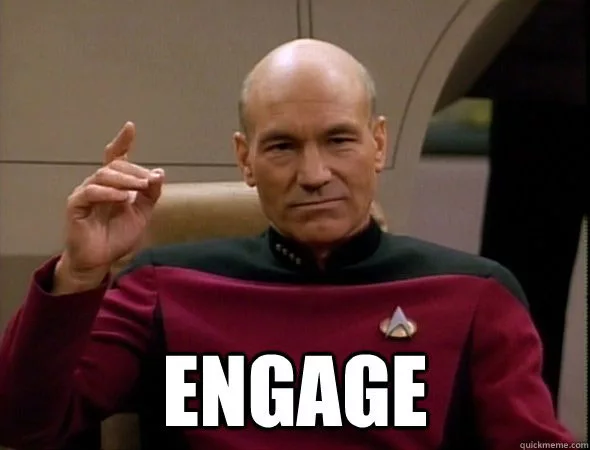By Mark Havenner
We’ve all heard it before. Especially since the days social media transitioned from a “phenomena” to “career choice.” It’s the marketing babble-speak that is practically useless and philosophically… well, useless.
“Brands need to engage authentically with audiences.”
“Brands need to have meaningful interactions.”
“Brands need to engage meaningful interactions.”
After a while we all start sounding like Captain Picard of the Enterprise saying, “Number one, engage. Shields up! Interact!”
Don’t get me wrong, I’ve said those very words myself, many times. And those words are true. Brands do need to be authentic, engage and interact with audiences. But what does that really mean? And is it enough to do that? Shouldn’t the sentiment transcend only social media?
First, let’s get to the bottom of what have become communications clichés. What are really trying to when we talk about engagement and authenticity? Really what we mean is that brands need to be personable and accessible. Unafraid to respond to customers in real time with authentic voices and the genuine desire to communicate. That simply cannot be taught. It is a new way of looking at branded engagement from top to bottom.
But, here’s the thing. Brands can engage and interact until they’re blue in the face, but unless they are doing so authentically, it’s not going to do anything for them. You can have a billion Facebook likes, but if they are acquired without authenticity, you may as well not have any.
Okay, bold sentiment, but what does that mean? Is it authentic to smile and nod, be helpful and respectful? Certainly those are good qualities for a brand to have when communicating online or offline, but that’s not necessarily authentic.
Authenticity is about being honest about yourself, your audience, and what you are communicating.
Not being authentic means acting like something your not, misleading audiences with communications, playing games with audiences or trying to “trick” them into doing something.
I’m not really talking about ethics here—we should always be ethical—I’m talking about how you communicate. You never want to be that middle-aged, gray-haired guy with a backwards cap walking into a club saying, “Hey dudes” like you somehow belongs with hip twenty-somethings.
I’m not saying you shouldn’t go to that club, I’m just saying you should be who you are. Talk with the audiences from a genuine and realistic place. Don’t be ashamed of who you are, what you represent, or what you want to say. Don’t try to trick people into thinking you’re something you’re not. Authenticity is about being comfortable in your own skin as a brand and finding ways to talk with your audiences with your true voice. Not a robot voice that belongs to some distant corporate collective, and not a fake voice that attempts to make you sound more like your audience. A true voice: your voice.
And whether that means you are putting out a press release or a tweet, your litmus test for whether or not the message is authentic should be, is it true to who you are? If so—engage!
For more agency insights, visit our WellRed archives






